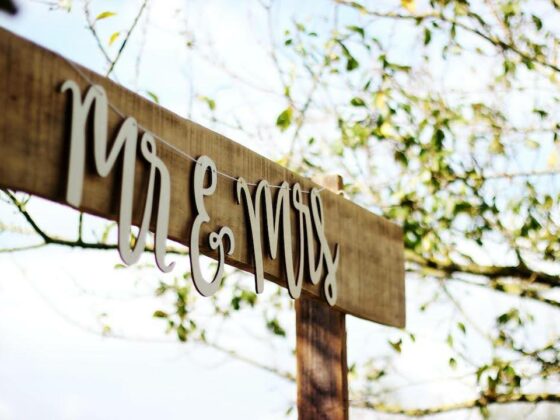This project starts with a little story. Five years ago my husband and I bought an old historic home. It was built somewhere in the mid-to-late-1800s. The house had been empty for a couple of years and raccoons used it for part of that time. We had this little gross closet (see left photo above) that I wouldn’t store anything in so my dad suggested we turn it into a bathroom.
I’ll spare you the drama of putting in the bathroom, but we ended up with the little beauty in the above right photo! You can see that the pipes under the sink are still visible. My husband planned to route something with his instrument, but I had a better idea, and it involved a SKIRT!
That brings us to this project. A sink skirt was the perfect solution to hide those pipes and add some extra character.
After I had the skirt finished, I used sticky velcro squares and attached one side to my sink and one side to my sink skirt. The ones on the sink stuck really well but the ones on the fabric lost their hold when the unheated bathroom reached arctic temperatures. After that, I handstitched the squares to the fabric but the stickiness made it nearly impossible to push the needle through and now my finger is full of holes. You can benefit from my suffering: I would recommend sticky velcro for the sink and nonsticky velcro stitched to the fabric. I used 5 squares, but again, it’s a really small sink so you may need more. Now it’s ready to be attached and you’re all done!
Table of Contents
Sink Skirt FAQs
What is the purpose of a sink skirt?
A sink skirt is a decorative piece that is placed around the base of a sink. It can be used to add color and interest to a bathroom or kitchen, and it can also help to hide plumbing fixtures and pipes. Skirts can be made from a variety of materials, including cloth, vinyl, and tile.
What material can you use to make a sink skirt?
There are many different types of materials that can be used to make a sink skirt. Some common options include fabric, paper, and even vinyl. Each material has its own advantages and disadvantages, so it is important to choose the right one for your needs.
Fabric is a popular choice for sink skirts because it is relatively inexpensive and easy to work with. However, fabric can be easily damaged by water and may require more frequent cleaning than other materials.
Paper is another option for sink skirts. Paper is generally more durable than fabric and can be wiped clean easily. However, paper skirts can be more difficult to install than fabric ones.
Vinyl is a durable material that is resistant to water damage. However, vinyl can be more difficult to work with than fabric or paper. Additionally, vinyl skirts may not look as nice as other types of sink skirts.
How do you attach a skirt to a porcelain sink?
There are a few ways that you can attach a skirt to a porcelain sink. You can use silicone caulk to adhere the skirt to the sink, you can use double-sided tape, or you can use velcro strips. Whichever method you choose, be sure to clean the sink surface thoroughly before attaching the skirt.
If you’re using silicone caulk, apply a bead of caulk around the perimeter of the sink. Place the skirt over the caulk and press it into place. Use your fingers to smooth out any air bubbles or wrinkles. Let the caulk set for 24 hours before using the sink.
For double-sided tape, apply a strip of tape around the perimeter of the sink. Place the skirt over the tape and press it into place. Use your fingers to smooth out any air bubbles or wrinkles. Let the tape set for at least an hour before using the sink.
If you’re using velcro strips, apply a strip of velcro around the perimeter of the sink. Place the skirt over the velcro and press it into place. Use your fingers to smooth out any air bubbles or wrinkles. Let the velcro set for at least an hour before using the sink.
















1 comment
I think this is a positively brilliant idea. I had pipes under my sink for the last 20 years and it never once occurred to me to do something like this. Thank you so much for sharing the way you did it.